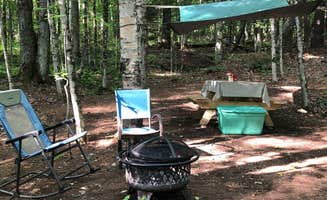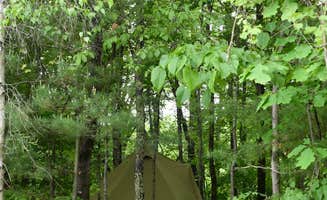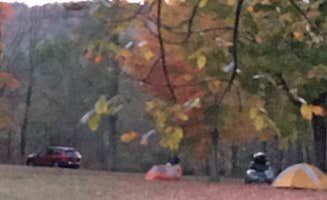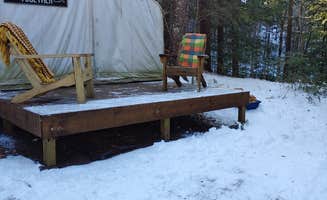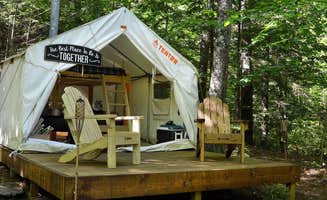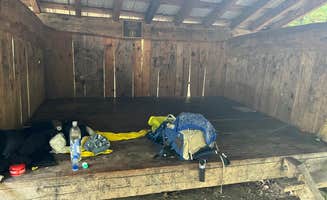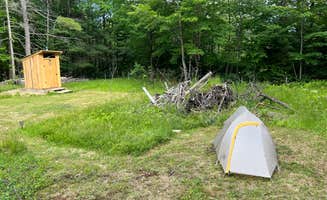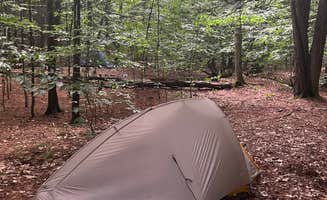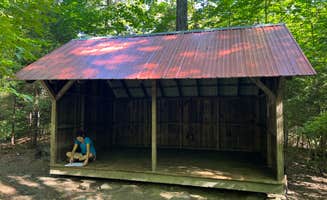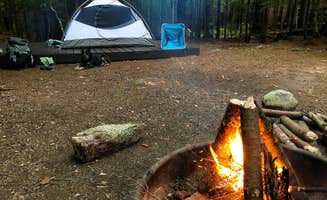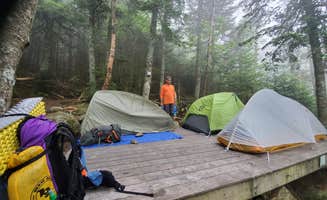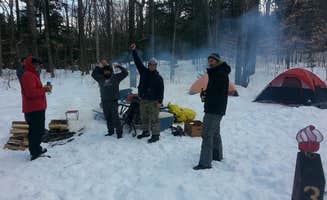Tent camping around Hill, New Hampshire offers access to White Mountain wilderness with elevations ranging from 450 to 2,300 feet. The area experiences warm summer days with temperatures typically between 70-85°F and cool nights around 50-60°F. Several backcountry sites require water filtration due to unreliable seasonal sources during the region's frequent summer drought conditions.
What to do
Climbing expeditions: Cardigan Mountain provides accessible climbing opportunities from nearby Cardigan Campsites. "Great spot to spend the night before a climb of Mt. Cardigan! Or after! The climb is challenging but shouldn't take too long. Great fire tower views at the top too!" notes Madison G.
Swimming and fishing: Several camping areas provide water access with varying regulations. The 1.5-mile trail to Sawyer Pond leads to waterfront sites where "The lake is just steps away from the camping sites and is absolutely beautiful," according to Hunter P. In colder months, Jean C. reports, "I've ice-fished on the pond."
Paddling opportunities: Squam Lake offers both hike-in and boat-in tent platforms for paddlers seeking water access. "Simple, but gorgeous. The association maintains about a dozen campsites in the Squam Lake area -- some hike-in and others boat-in only," explains Shari G.
What campers like
Secluded platforms: The wooded tent sites at Baker Rocks feature thoughtful amenities within natural settings. Justin P. describes, "The site had a large tent platform they could fit multiple tents, a brand new picnic table, a fire ring (with a free bundle of firewood), two chairs by the fire ring, and even a few strings of solar lights around the camp area."
Shelter alternatives: When weather threatens, three-sided shelters along the Appalachian Trail provide alternatives to tents. At Moose Mountain, Justin P. found "a standard three-sided shelter. There were a host of large, flat tent sites around the shelter, and I tented in one of these."
Wildlife viewing: Early mornings and evenings offer opportunities to observe local animals. April W. mentions Baker Rocks "even have animals to visit like bunnies and goats (far away from the campsites)," though she cautions, "Do bring bug spray, the mosquitoes at certain times of day were aggressive."
What you should know
Water availability: Many backcountry sites have unreliable water sources during dry periods. At Trapper John Backcountry Campground, Justin P. reported, "There is a water source in the area but it did not have water when I visited (probably on account of the drought)."
Limited firewood: Regulations vary by site, and gathering fallen wood may be challenging. Hunter P. warns about Sawyer Pond: "There was very little available firewood near the campsites."
Site availability: Popular backcountry locations fill quickly, especially on weekends. Sarah C. observed at Sawyer Pond: "We witnessed several parties, many with young children, arriving late to find that all the sites were occupied. Do yourself a favor and arrive early!"
Tips for camping with families
Short hiking options: For families with children, choose sites with manageable approaches. The Lost Boys Hideout offers accessible walk-in sites with "Nice new tents provided at Sleepy Hollow site. Improvements to the firepit, area all mulched, even some games and water are provided!" according to Steve K.
Trail difficulty assessment: When hiking to backcountry sites, consider trail terrain for younger hikers. Sarah C. describes Sawyer Pond as "a great beginner backpacking trip, great even for kids!" with a 1.5-mile approach from one trailhead.
Off-season quietude: Consider shoulder season camping for more solitude. Ryan M. reports about Sawyer Pond: "No one else was there. Waist deep snow made hike in a little more difficult, post holing every 5th step."
Tips from RVers
Tent options for RVers: RV campers looking for a tent experience should note that few areas accommodate both vehicle camping and tent platforms. At AAC Rattlesnake Campground, Les R. observed it's "Finally a campground near Rumney climbing!" with tent sites that complement the climbing-focused atmosphere.
Parking logistics: When transitioning between vehicle camping and backcountry sites, secure parking can be limited. Hunter P. notes about Sawyer Pond: "The trail head is located at the end of a 9 mile road and there are several spots for parking- note: there is no cell service once you get on this road."
Road conditions: Access roads to many tent camping areas may be seasonal or require high-clearance vehicles. Jean C. advises about access to Sawyer Pond: "Check the White Mountain National Forest website for information about road openings in the spring and fall."


